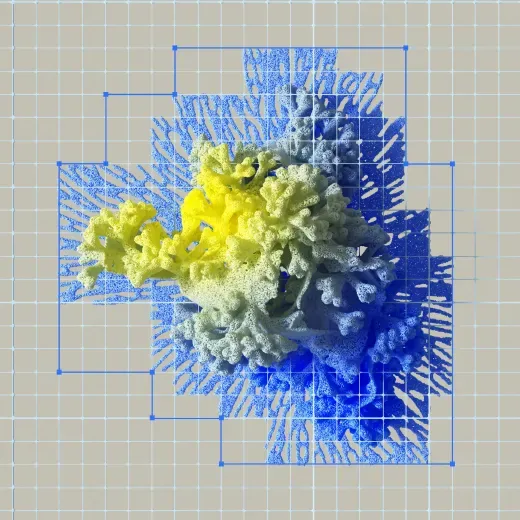Unveiling the Enterprise Integration Patterns (EIP) - Part Four
software development

Vladimir Vasić
Team Lead
Hey there! In my previous post, we dove into the fundamentals of EIP - Messages, message routing, and transformation. Today, I'm excited to share how we've actually implemented some system management patterns in our demo project, specifically around monitoring, debugging, and maintaining our integration solutions. Let me show you how we put these concepts into practice and what we learned along the way.
From Theory to Practice: Our Demo Project Journey
The Patterns Behind Our Implementation
One of the biggest challenges we faced in our demo project was troubleshooting issues in our production environment without disrupting the normal message flow. We needed ways to monitor, debug, and ensure reliability of our integration solutions. This is where the System Management patterns really saved us.
After some experimentation, we found that combining Wire Tap and Message History patterns gave us incredible visibility into our system. Let me show you how we implemented Wire Tap using Spring Integration:
Wire Tap Pattern for Monitoring
@Bean
fun wireTapChannel(): MessageChannel = DirectChannel()
@Bean
fun auditInterceptor(): ChannelInterceptor {
return WireTap(wireTapChannel())
}
@Bean
fun wireTapFlow(): IntegrationFlow = integrationFlow(wireTapChannel()) {
handle { message: Message<Any> ->
logger.info("Message intercepted: ${message.payload}")
auditService.recordMessage(message)
}
}I particularly love how this non-intrusive pattern lets us peek into message flows without altering them. It’s like having a security camera monitoring our system!
Message History Pattern in Action
Looking at this snippet, I implemented a wire tap that intercepts messages flowing through our channels and sends copies to our audit service. It’s pretty straightforward - messages continue on their normal path, but we get a copy for monitoring.
What I found particularly neat was how we could layer multiple patterns in our core component. We’re not just tapping - we’re also using Message History to track the journey of messages through our system. Spring Integration provides built-in support for this pattern, which we enabled with a simple configuration:
But we didn’t stop there! We extended the Message History pattern to include custom workflow step information. Here’s how we implemented it in our workflow steps:
interface WorkflowStepAsync<T, E> {
@ServiceActivator
suspend fun handleAsync(message: Message<T>): E {
val history = message.headers.get(MessageHistory.HEADER_NAME, MessageHistory::class.java)
history?.let {
enrichMessageHistory(it)
}
val retryPolicy = retryAdvice()
if (retryPolicy != null) {
for (attempt in 1..retryPolicy.maxAttempts) {
try {
return stepLogic(message)
} catch (throwable: Throwable) {
if (!retryPolicy.retryOn.any { throwable::class.isSubclassOf(it) }) {
throw throwable
}
if (attempt == retryPolicy.maxAttempts) {
retryPolicy.recoveryCallback?.let {
throw it(throwable)
} ?: throw throwable
}
delay(retryPolicy.backoffTime.toMillis())
}
}
}
return stepLogic(message)
}
fun enrichMessageHistory(messageHistory: MessageHistory): MessageHistory {
return messageHistory
}
suspend fun stepLogic(context: Message<T>): E
}And to make this even more powerful, we created a history enricher function that adds specific step descriptions:
fun stepHistoryEnricher(stepClassName: String): (messageHistory: MessageHistory) -> MessageHistory {
return { history: MessageHistory ->
val property = history[history.size - 1]
property.setProperty("stepDescription", stepClassName)
history
}
}I particularly love how this comprehensive history tracking gives us end-to-end visibility into our message flows. When combined with Wire Tap, it’s like having X-ray vision into our system! Not only can we see what components a message passed through, but we also know exactly which workflow steps were executed and when.
I can tell you, this configuration has been an absolute lifesaver for debugging complex issues. When a message disappears into the void, the history gives us a breadcrumb trail to follow!
Message Store Pattern for Reliability
I discovered we could leverage Spring Integration’s JPA-based message store to do some pretty clever things. This pattern isn’t just about storing messages - it’s about ensuring reliability! For example, we’ve used the message store to:
- Survive system crashes without losing in-flight messages
- Implement sophisticated retry logic with exponential backoff
- Create a “time machine” by replaying historical messages
- Guarantee delivery of critical business transactions
One particularly useful trick I learned was using this pattern to implement a “dead letter queue” for messages that repeatedly fail processing. Instead of losing them, we store them in a separate channel for manual inspection and intervention.
As always, Documentation
Before diving into all these patterns and implementations, there’s something we should establish right at the start - good documentation practices! When working with System Management patterns, keeping clear and up-to-date documentation is essential. Let me walk you through the key patterns we’ve explored and how we can effectively document them in our systems.
Detour Pattern: Rerouting for Debugging
Description
The Detour pattern temporarily routes a message to a different channel, typically for debugging, testing, or handling exceptional situations. The pattern allows us to intercept messages before they reach their normal destination, process them differently, and then either return them to the normal flow or discard them.

Usage
Used when there’s a need to temporarily redirect message flow without modifying the main message processing logic. Particularly valuable for debugging and troubleshooting in production environments.
Example
When investigating a specific issue with order processing, we might want to examine certain messages in greater detail. Using the Detour pattern, we can route messages that match specific criteria (e.g., orders above a certain value or from a particular client) to a debug channel where we can log comprehensive details without affecting normal message flow.
Wire Tap Pattern: Non-Intrusive Monitoring
Description
The Wire Tap pattern allows us to inspect messages flowing through a channel without interrupting their normal flow. It’s analogous to a wiretap on a telephone line - listening in without disrupting the conversation.

Usage
Used when we need to monitor message flow for auditing, debugging, or analysis purposes without affecting the normal operation of the system. Perfect for production environments where disrupting the message flow is not an option.
Example
In a financial transaction processing system, regulatory compliance might require maintaining an audit trail of all message exchanges. A Wire Tap can copy every message to an audit channel without delaying or modifying the original message flow, ensuring both compliance and performance.
Message History Pattern: Tracking the Journey
Description
The Message History pattern adds metadata to a message that tracks its journey through the system, recording each component it passes through along with timestamps.

Usage
Used when we need to understand the exact path a message has taken through our integration components, especially for complex flows with multiple routing decisions or when diagnosing performance bottlenecks.
Example
In a complex order fulfillment system with multiple possible processing paths, a message might travel through different components based on order type, customer category, or inventory status. Message History allows us to track exactly which components processed each order and when, helping to identify bottlenecks or unexpected routing decisions.
Message Store Pattern: Ensuring Durability
Description
The Message Store pattern persists messages to storage, allowing them to be retrieved later for retry, audit, or recovery purposes.

Usage
Used when we need to ensure message durability across system restarts, implement retry logic, or maintain a historical record of message exchanges. Critical for systems where message loss cannot be tolerated.
Example
In an order processing system that communicates with multiple external services, a temporary outage of one service shouldn’t result in message loss. By storing messages in a persistent Message Store, the system can retry failed deliveries after the service becomes available again, ensuring that no orders are lost due to temporary outages.
Bringing It All Together: Our Complete EIP Journey
Now that we’ve explored the full spectrum of Enterprise Integration Patterns across this four-part series, I want to take a moment to connect all the dots and reflect on how these patterns work together to create truly robust integration solutions.
The Complete EIP Toolkit: From Foundations to Advanced Techniques
Remember back in Part 1 when we first introduced the concept of messages and channels? Those fundamental building blocks laid the groundwork for everything that followed. We learned that:
- Message Channels (Point-to-Point, Publish-Subscribe, Dead Letter) provide the communication pathways that allow our components to remain blissfully unaware of each other
- Messages themselves follow specific formats (Command, Event, Document) that shape how our systems interact
Then in Part 2, we tackled the practical implementation of Messaging Endpoints:
- Messaging Gateways that act as our system’s receptionists
- Service Activators that handle the actual business processing
- Polling Consumers that reliably fetch messages even when publishers can’t actively push
Remember that simple but powerful Kotlin gateway code?
@MessagingGateway
interface InboundGateway {
@Gateway(requestChannel = "inboundRequestChannel")
fun forward(notification: Notification)
}In Part 3, we moved to more advanced territory with Message Routing and Transformation:
- Content-Based Routers that intelligently direct messages based on their content
- Envelope Wrappers that standardize message formats
- Content Enrichers that add necessary context
And finally, here in Part 4, we rounded out our toolkit with System Management patterns:
- Wire Taps for non-intrusive monitoring
- Message History for tracking message journeys
- Message Store for ensuring durability and reliability
Real-World Lessons: What We’ve Learned
Implementing these patterns in our real project taught us valuable lessons that theory alone couldn’t provide:
-
Loose coupling really works – By restricting our components to communicate only through messages, we’ve created a system where changes in one area don’t cascade throughout the codebase. This has been a game-changer for our maintenance efforts.
-
Observability is non-negotiable – The Wire Tap and Message History patterns seemed like “nice-to-haves” initially, but they quickly became essential when trying to debug complex message flows in production. As our tech lead likes to say, “You can’t fix what you can’t see!”
-
Resilience requires deliberate design – The Message Store pattern combined with Dead Letter Channels has dramatically improved our system’s ability to recover from failures. Messages that previously would have vanished into the void are now safely preserved for retry or manual intervention.
-
Performance considerations matter – While these patterns bring tremendous benefits, they do come with overhead. We’ve learned to be judicious about which patterns we apply where, especially with high-volume message flows.
-
Documentation is key – As powerful as these patterns are, they introduce complexity that must be clearly documented. Our team conventions now require diagrams showing the message flows for each new feature.
Gotchas and Pitfalls: Hard-Earned Wisdom
Let me share some hard-earned lessons that might save you some late nights:
-
Database-backed message channels need proper indexing and cleanup strategies. We learned this the hard way when our message store table grew to millions of rows and queries slowed to a crawl.
-
Error handling deserves special attention. When messages flow through multiple components, error propagation becomes complex. Our approach of enriching error messages with the full message history has been invaluable.
-
Testing integration flows requires specialized approaches. We’ve developed a set of test utilities that allow us to “tap” into channels during tests and verify message transformations.
-
Monitoring and alerting should be considered from day one. Define what “normal” message flow rates look like so you can detect anomalies early.
The Bigger Picture: Beyond Individual Patterns
What strikes me most as I look back on our journey is how these patterns form a cohesive system rather than isolated solutions. The real power comes from their interplay:
- Message Channels enable loose coupling
- Message Routing provides flexibility
- Message Transformation ensures compatibility
- System Management adds visibility and control
Together, they create an integration architecture that’s not just functional but also maintainable, observable, and adaptable to change.
Looking at our architecture now compared to where we started, I’m amazed at the transformation. What began as simple point-to-point connections has evolved into a sophisticated message processing network that can handle failures gracefully, scale with our needs, and adapt to changing business requirements.
Final Thoughts
If there’s one thing I hope you take away from this series, it’s this: integration is not just about connecting systems—it’s about creating a resilient, observable, and adaptable communication fabric that evolves with your business. The patterns we’ve explored give us a powerful vocabulary and toolset for doing exactly that.
Thank you for joining me on this journey through Enterprise Integration Patterns. I hope these posts have given you both theoretical understanding and practical insights that you can apply in your own integration challenges. I’d love to hear about your experiences with these patterns in the comments below!
Happy integrating!
